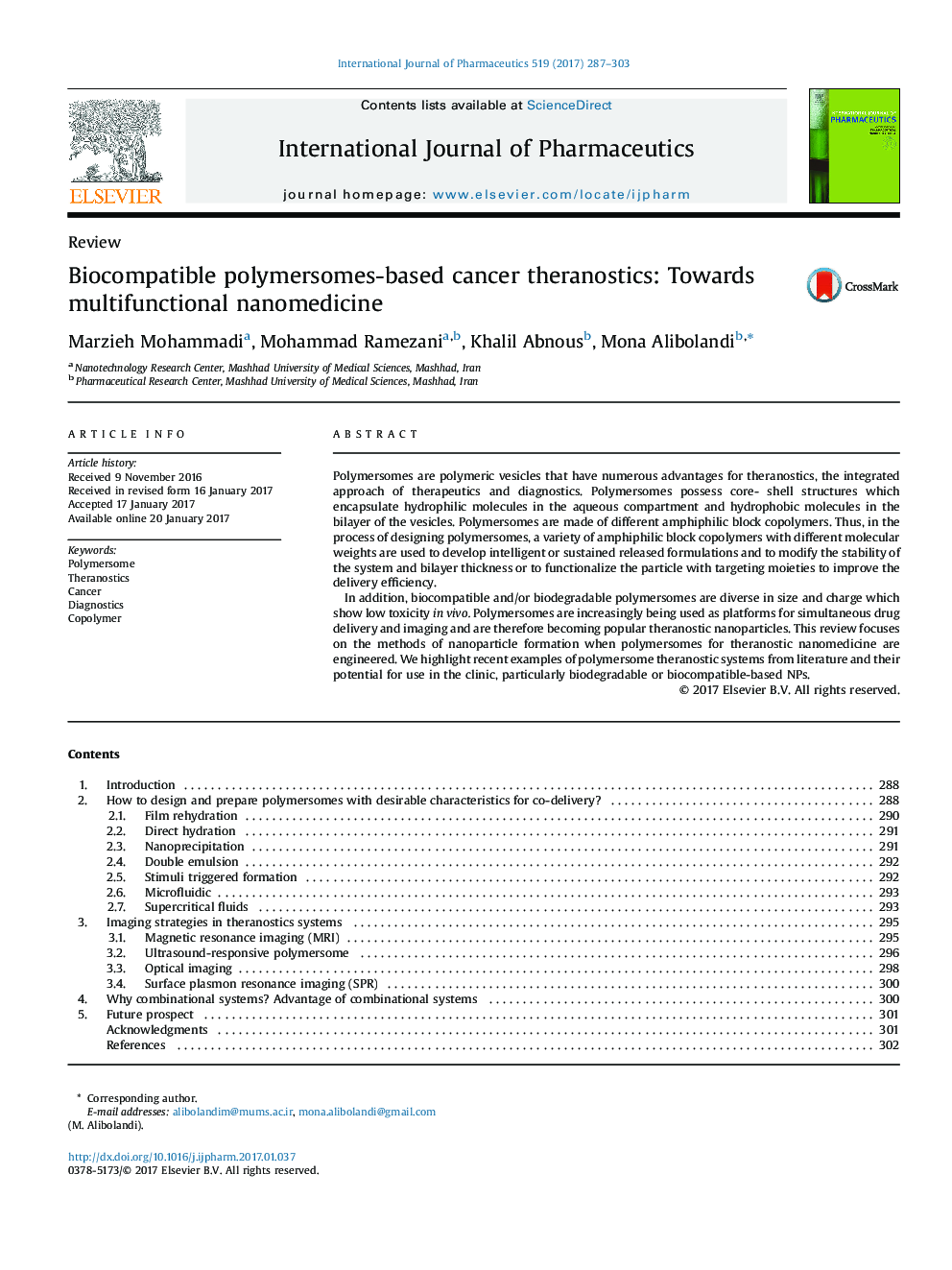| Article ID | Journal | Published Year | Pages | File Type |
|---|---|---|---|---|
| 5550699 | International Journal of Pharmaceutics | 2017 | 17 Pages |
â¢Polymersomes are polymeric vesicles that have numerous advantages for theranostic.â¢Polymersomes are made of various amphiphilic block copolymers.â¢In this review we summarized the preparation methods of polymersomes for codelivery application.â¢Then we focused on theranostics and also diagnostics polymersomes which can be used for theranostics purposes in the future, based on various imaging probes.
Polymersomes are polymeric vesicles that have numerous advantages for theranostics, the integrated approach of therapeutics and diagnostics. Polymersomes possess core- shell structures which encapsulate hydrophilic molecules in the aqueous compartment and hydrophobic molecules in the bilayer of the vesicles. Polymersomes are made of different amphiphilic block copolymers. Thus, in the process of designing polymersomes, a variety of amphiphilic block copolymers with different molecular weights are used to develop intelligent or sustained released formulations and to modify the stability of the system and bilayer thickness or to functionalize the particle with targeting moieties to improve the delivery efficiency.In addition, biocompatible and/or biodegradable polymersomes are diverse in size and charge which show low toxicity in vivo. Polymersomes are increasingly being used as platforms for simultaneous drug delivery and imaging and are therefore becoming popular theranostic nanoparticles. This review focuses on the methods of nanoparticle formation when polymersomes for theranostic nanomedicine are engineered. We highlight recent examples of polymersome theranostic systems from literature and their potential for use in the clinic, particularly biodegradable or biocompatible-based NPs.
Graphical abstractDownload high-res image (141KB)Download full-size image
